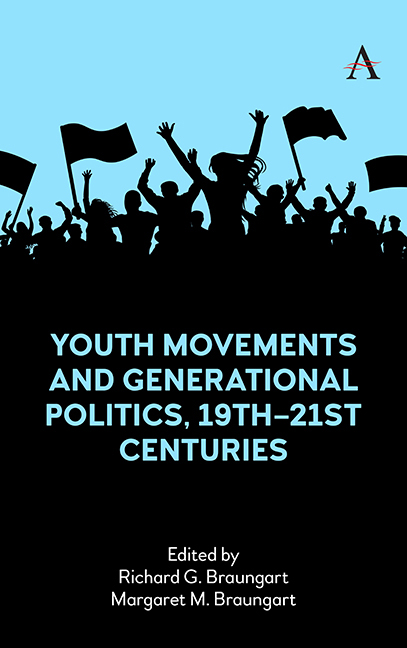Conclusion
Published online by Cambridge University Press: 18 November 2023
Summary
After studying the formation, patterns, and dynamics of youth movements from 1815–1990, the next question is what is happening with youth movement activity in the 21st century? So far in this new century, the media has reported numerous outbreaks of youthful protests and activism, such as the color revolutions in Eastern Europe; the Occupy Wall Street movement that began in New York City and spread to other cities and countries; the Arab Spring uprising in the Middle East; and the demonstrations and skirmishes between young protesters and police in Hong Kong. In the United States, people of many ages took to the streets in cities to protest racism against blacks and police brutality in what became known as Black Lives Matter. There also was the anti-gun movement organized by teenagers in Florida after a former student went on a rampage in the high school and killed 17 students. And there was a compelling global environmental movement over the need to address climate change that was started by Greta Thunberg, a 15-year-old Swedish student. Her Friday School Strike and sit-in at the Swedish parliament in 2018 sparked youthful support and ignited coordinated demonstrations and strikes to address climate change by young people throughout the world.
With the exception of the global climate change movement, this eruptive youthful political activity in the first two decades of the 21st century was treated as a series of widely scattered youth demonstrations and unrest. But we wondered what is going on with young people in so many countries around the world. Why are large numbers of youth taking to the streets to protest and demand social and political change? Our interest was piqued, and we also wondered about the extent of youth movement activity and whether these 21st-century youth movements differed from those in the previous eras of generational conflict discussed in this anthology.
In the concluding chapter, we examine the extent of youth movement activity in the 21st century in each world region and assess how it relates to other eras of upsurges in youth activism and unrest. We then discuss what this new era of youth protest may indicate for societies and politics in the future.
- Type
- Chapter
- Information
- Youth Movements and Generational Politics, 19th-21st Centuries , pp. 521 - 546Publisher: Anthem PressPrint publication year: 2023



